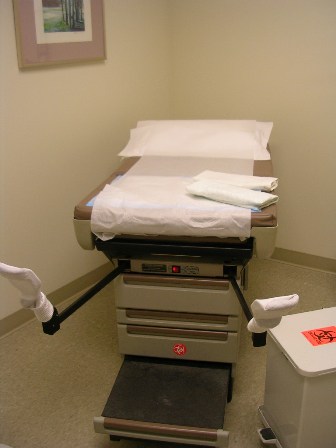
|
|
SUBSIM: The Web's #1 resource for all submarine & naval simulations since 1997
 |
SUBSIM: The Web's #1 resource for all submarine & naval simulations since 1997 |
|
|
 06-23-10, 07:24 PM
06-23-10, 07:24 PM
|
#1 |
|
Navy Seal
 |
CBM - Common Berthing Mechanism
http://en.wikipedia.org/wiki/Common_Berthing_Mechanism I'm trying to figure out how realistic it would be to throw 80kN (or more) of thrust into a space station that uses these to mate all of its modules together. I don't have a very good understanding of material strengths, and certainly no idea how strong the CBM components are. How well would they take compressive loads (for modules that are connected along the longitudinal axis of the station), and how well would they take shearing(?) loads (for modules connected either vertically or laterally to the station)?  This isn't for any kind of assignment or work detail (thankfully, I'd be on the D-list for sure), it is just a hobby of mine.
__________________
sent from my fingertips using a cheap keyboard |

|

|
 06-23-10, 07:33 PM
06-23-10, 07:33 PM
|
#2 |
|
Fleet Admiral
|
Are you sure you're not thinking of of this CBM
Common Birthing Mechanism?  . . . . . . . . . . . . 
__________________
 
|

|

|
 06-23-10, 07:37 PM
06-23-10, 07:37 PM
|
#3 | |
|
Fleet Admiral
|
Quote:
look out!
__________________
 
|
|

|

|
 06-23-10, 08:13 PM
06-23-10, 08:13 PM
|
#4 |
|
Navy Seal
 |
If compression tolerance is the problem perhaps you are going about it backwards. Instead of docking the modules before launch tie them in train (with some sort of high strength cable with a series of baskets for each module) and pull them in to a higher orbit with a tug.
Of course there is nothing preventing you from doing a longer low powered burn, it doesn't matter how much thrust you use to get your final Delta V, you will get there eventually since the length of burn adds to it just as much as each kN of additional thrust would add to it. |

|

|
 06-23-10, 08:34 PM
06-23-10, 08:34 PM
|
#5 |
|
Navy Seal
 |
I'm all for multiple low-power burns, in fact that would probably be the most intelligent thing to do. I have succeeded in boosting to a higher orbit from LEO with a total 120kN thrust, but it was all done in the Orbiter simulator which doesn't account for stresses to the vehicle being pushed. So, that's where I have to really start thinking about what I'm doing in there. (hence this thread
 ) )The thing of it is, I'm actually thinking of trying to send something the size of the ISS to the moon and back using that simulator. What I've put together so far is balanced well enough that I can dock four thrusters to it (each one puts out 40kN main thrust), fire them all at full power and still maintain prograde orientation. The problem in my mind is, when I try to put this thing into a trans-lunar injection I will need all of that power. Will the station hold together, or will it tear apart? If anything goes it would be the weakest link in the chain; the CBM ports that hold it all together.
__________________
sent from my fingertips using a cheap keyboard |

|

|
 06-23-10, 08:54 PM
06-23-10, 08:54 PM
|
#6 |
|
Navy Seal
 |
I figured you were using Orbiter.
I honestly don't know the tolerances of the component in question. As a point of reference... in fact the only point of reference I can think of for what you are doing would be the Apollo CSM. Its maximum main engine thrust was 91,000 N of thrust (or 91kN) and it was capable of using that thrust while docked to the LEM. So I think it is feasible as far as compression goes, shear I have no clue since Apollo was stacked in a strait line not and L or + shape. Must resist urge to download Orbiter again... must work on LWAMI 3.11... |

|

|
 06-23-10, 09:27 PM
06-23-10, 09:27 PM
|
#7 |
|
Navy Seal
 |
Yeah, Buster!
 You work on LWAMI and I'll work on putting a new crater on the moon. Mmmkay? You work on LWAMI and I'll work on putting a new crater on the moon. Mmmkay?  EDIT: Looking forward to the new LWAMI, btw. I haven't played DW in ages and if memory serves me right I had installed one of the first releases then.
__________________
sent from my fingertips using a cheap keyboard Last edited by krashkart; 06-23-10 at 10:15 PM. |

|

|
 06-24-10, 12:59 AM
06-24-10, 12:59 AM
|
#8 |
|
Ocean Warrior
 |
Honestly I don't think that would be very realistic, torsion forces plus imbalanced thrust (cause 4 rockets will not fire perfectly equal) would most likely rip it to pieces, and I don't think they are designed to take that kind of strain to begin with. The LEM on the other hand was designed to land on the moon (and could easily support the thrust from the CM).
A more realistic scenario would be to boost parts into orbit, possibly partially assemble into larger sections, then boost to lunar orbit and assemble. |

|

|
 06-24-10, 08:40 AM
06-24-10, 08:40 AM
|
#9 | |
|
Navy Seal
 |
Quote:

|
|

|

|
 |
|
|
